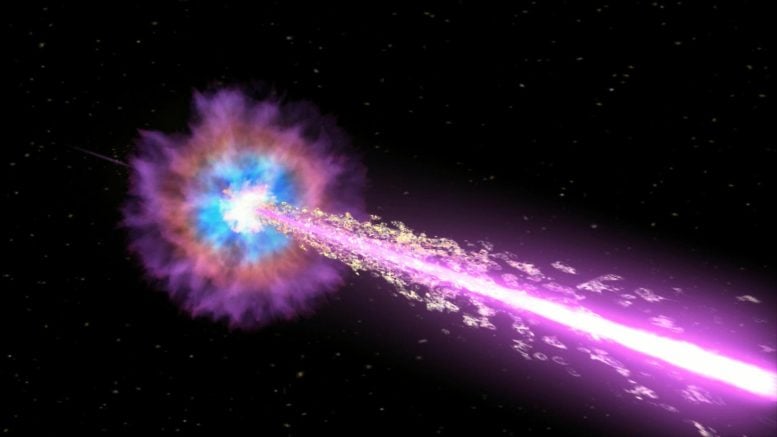
Astronomers think GRB 221009A represents the birth of a new black hole formed within the heart of a collapsing star. In this illustration, the black hole drives powerful jets of particles traveling near the speed of light. The jets pierce through the star, emitting X-rays and gamma rays as they stream into space. Credit: NASA/Swift/Cruz deWilde
Researchers studying GRB 221009A, the Brightest of All Time (BOAT) gamma-ray burst, found its jet exhibited an unusual structure, which may explain its extreme nature and prolonged visible afterglow. These findings could challenge standard theories about gamma-ray bursts and shape future studies.
When astronomers detected the gamma-ray burst known as GRB 221009A on October 9, 2022, they dubbed it the BOAT, or the brightest-of-all-time. Now, months after its initial burst, scientists studying GRB 221009A describe an unusual structure to the jet of material expelled during the explosion that may explain GRB 221009A’s extreme nature and why its afterglow remained visible for so long after the event. Researchers at George Washington University (GW) and collaborating institutions published their findings recently in the journal Science Advances.
Gamma-ray bursts are the most violent and energetic explosions in the Universe, releasing the same amount of energy in just a few seconds that the Sun produces over its entire lifetime. According to scientists, GRB 221009A resulted from the collapse of a massive star into a black hole.
Examining troves of multi-wavelength data from October’s gamma-ray burst, the research team discovered that GRB 221009A’s jet exhibited a narrow core with wide sloping wings. This was different from the types of jets seen in gamma-ray bursts produced by other cataclysmic events and may explain why scientists kept seeing GRB 221009A’s multi-wavelength glow for months after the explosion.
Learn more about GRB’s and the importance of studying them with Brendan O’Connor, GW graduate student, and lead study author. Credit: The George Washington University
“GRB 221009A represents a massive step forward in our understanding of gamma-ray bursts, and demonstrates that the most extreme explosions do not obey the standard physics assumed for garden variety gamma-ray bursts,” Brendan O’Connor, GW graduate student and lead study author, says. O’Connor led the research team that was using the Gemini South Telescope in Chile to observe the event last October. “GRB 221009A might be the equivalent Rosetta stone of long GRBs, forcing us to revise our standard theories of how relativistic outflows are formed in collapsing massive stars.”
The findings will drive future studies of gamma-ray bursts and motivate scientists to develop simulations of gamma-ray burst jet structures.
“For a long time, we have thought about jets as being shaped like ice cream cones,” says Alexander van der Horst, associate professor of physics at GW and study co-author. “However, some gamma-ray bursts in recent years, and in particular the work presented here, show that we need more complex models and detailed computer simulations of gamma-ray burst jets.”
The study, “A structured jet explains the extreme GRB 221009A,” was published in the journal Science Advances.
For more on this study:
- Surprising Phenomena Observed by NASA’s NuSTAR in Brightest Cosmic Explosion Ever
- Decoding the Mystery of the Universe’s Brightest Explosion
Reference: “A structured jet explains the extreme GRB 221009A” by Brendan O’Connor, Eleonora Troja, Geoffrey Ryan, Paz Beniamini, Hendrik van Eerten, Jonathan Granot, Simone Dichiara, Roberto Ricci, Vladimir Lipunov, James H. Gillanders, Ramandeep Gill, Michael Moss, Shreya Anand, Igor Andreoni, Rosa L. Becerra, David A. H. Buckley, Nathaniel R. Butler, Stephen B. Cenko, Aristarkh Chasovnikov, Joseph Durbak, Carlos Francile, Erica Hammerstein, Alexander J. van der Horst, Mansi M. Kasliwal, Chryssa Kouveliotou, Alexander S. Kutyrev, William H. Lee, Gokul P. Srinivasaragavan, Vladislav Topolev, Alan M. Watson, Yuhan Yang and Kirill Zhirkov, 7 June 2023, Science Advances.
DOI: 10.1126/sciadv.adi1405
In addition to O’Connor and van der Horst, several other GW scientists contributed to this study and others related to GRB 221009A, including physics graduate student Michael Moss, Professor Chryssa Kouveliotou, Associate Professor Sylvain Guiriec, and Research Faculty George Younes, Jonathan Granot and Paz Beniamini.” Researchers from the University of Rome also contributed to this study, which was funded by NASA, European Research Council, and Smithsonian Astrophysical Observatory.

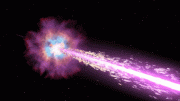
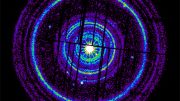
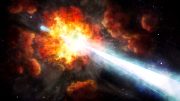
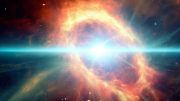
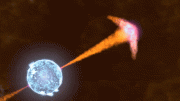
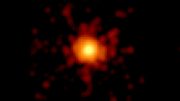
I read the original report and it was certainly well endowed with facts and figures, but left out any discussion of why a black hole during it’s formation would even bother to release energy, especially particles when after it’s complete formation it wouldn’t do that, it would seem to me at least that the only thing that the black hole would release is what gravity can’t compress; which I would guess would be the the strong force that held the nucleons together in the first place before the nucleons were compressed into oblivion; so that whatever energy is observed escaping is really just an observation of one form of energy being transformed into another form.